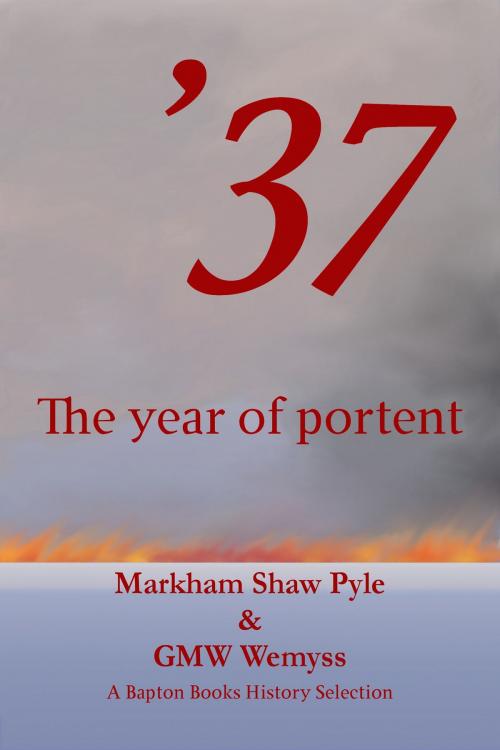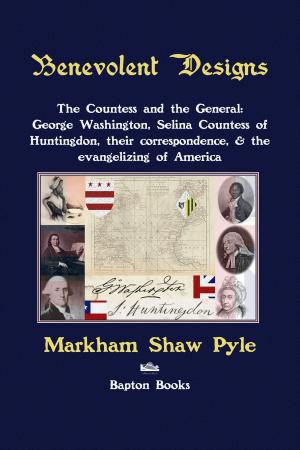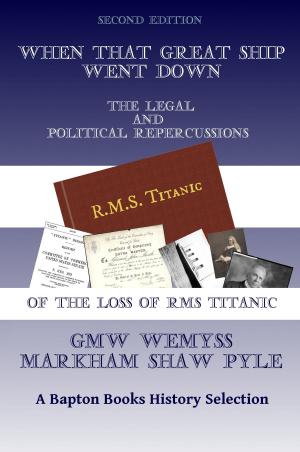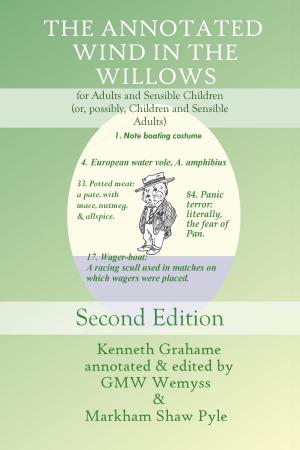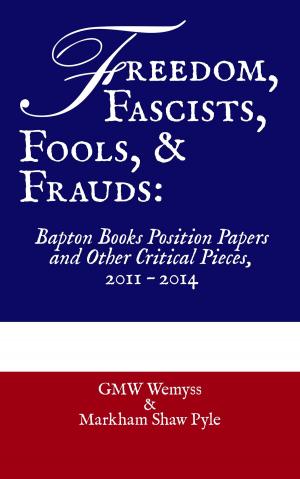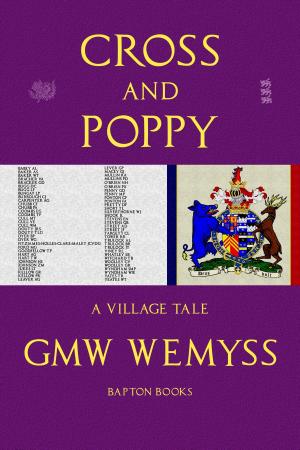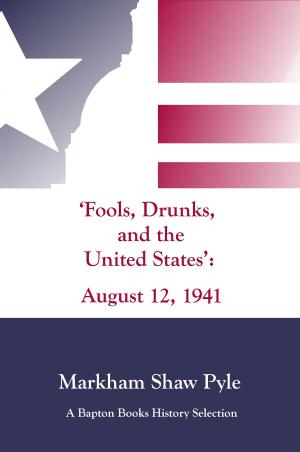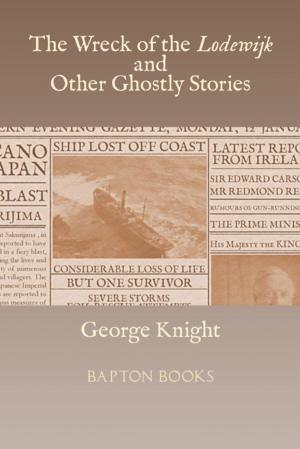| Author: | Markham Pyle | ISBN: | 9781301677153 |
| Publisher: | Bapton Books | Publication: | December 18, 2012 |
| Imprint: | Smashwords Edition | Language: | English |
| Author: | Markham Pyle |
| ISBN: | 9781301677153 |
| Publisher: | Bapton Books |
| Publication: | December 18, 2012 |
| Imprint: | Smashwords Edition |
| Language: | English |
It was the year of Amelia Earhart’s disappearance, the destruction of Guernica from the air, the New London School Explosion, and the Hindenburg disaster; of Alban Berg’s Lulu and MC Escher’s first ‘impossible’ print, the Panay Incident and Howard Hughes’ newest airspeed record. Spain bled, and Hitler outlined his plans for Lebensraum: the Hoßbach Memorandum.
The Ohio River and the Lower Mississippi flooded. The recovery of 1936 plummeted into the Recession of 1937 – 1938. Churchill was in the political wilderness; FDR thwarted himself by overreach and his plan to ‘pack’ the Supreme Court, raising a bipartisan conservative coalition against him in Congress; Stanley Baldwin left Downing Street in favour of his chosen successor, Neville Chamberlain. The duke of Windsor married Mrs Simpson; the coronation went ahead, with a different monarch: George 6th.
Stalin carried on with purge and show-trial. Japan renewed hostilities in China – ‘Bloody Saturday’ in Shanghai, and the Rape of Nanking. Italy committed genocide and war crimes in Abyssinia; the Third Reich continued its blind career towards destruction.
Dowding and Pile were determining that – whatever Baldwin had said – the bomber should not, actually, always get through: not through ack-ack, not through fighter screens, and above all not through radar. George C Marshall was keeping an eye on rising stars: Ike; Patton; Bradley.
Sam Rayburn was Majority Leader of the House; Lyndon Johnson entered Congress; Harry S Truman was midway through his first, undistinguished Senate term.
Bohr and Teller were looking into arcane mysteries; Hayek and Coase were making sense of the economic shambles; Wittgenstein threw away all his previous conclusions and began afresh, wrestling with language and meaning. Eliot was hearing the first premonitory whispers of four quartets in scansion, beyond Burnt Norton; Auden, the echoes of the Viking sagas.
The future and the past were interpenetrate: time present and time past…. Men sought the mastery of Nature, from the flooded Ohio to the new Golden Gate Bridge, and courted the Nemesis that on bold hubris waits; others quested after authenticity. By the end of the year, Walt Disney had recreated an old story as the first feature-length animated film: that of Snow White; Carl Orff had rescued old tavern songs of Fortune’s Wheel; and an obscure Oxford philologist had made new myth, from a hole in the ground where dwelt a hobbit.
1937 was a year of portent.
Now its story is told, by the authors of the celebrated centenary history of the US and UK Titanic Enquiries, hailed by the Daily Telegraph’s James Delingpole as a ‘cool reassessment’ and by Anne-Elisabeth Moutet, Paris contributing correspondent of the Sunday Telegraph, as ‘[a] sharply and eruditely-drawn account…. [A] vivid reconstruction and analysis … a parliamentary procedural as well as the re-creation of a vanished pre-War world’. Markham Shaw Pyle is the historian of how, in 1941, four scant months before Pearl Harbor, the US Congress kept the draft – by one vote; GMW Wemyss, the chronicler of those three days in May 1940 during which Chamberlain was toppled and Churchill raised to the premiership just as Hitler began his invasion of France.
In this sweeping history of a portentous year, they once more range from intellectual history to the fields of battle, from flooded farms to the halls of Congress and the Palace of Westminster, illuminating great and little alike. This is at once history in the grand manner, and history from the ground up: from nuts and bolts and poets’ insights, to secret diplomacy, the mysteries of physics, the warfare in the human heart, and moments of high tragedy and unconquered hope.
It was the year of Amelia Earhart’s disappearance, the destruction of Guernica from the air, the New London School Explosion, and the Hindenburg disaster; of Alban Berg’s Lulu and MC Escher’s first ‘impossible’ print, the Panay Incident and Howard Hughes’ newest airspeed record. Spain bled, and Hitler outlined his plans for Lebensraum: the Hoßbach Memorandum.
The Ohio River and the Lower Mississippi flooded. The recovery of 1936 plummeted into the Recession of 1937 – 1938. Churchill was in the political wilderness; FDR thwarted himself by overreach and his plan to ‘pack’ the Supreme Court, raising a bipartisan conservative coalition against him in Congress; Stanley Baldwin left Downing Street in favour of his chosen successor, Neville Chamberlain. The duke of Windsor married Mrs Simpson; the coronation went ahead, with a different monarch: George 6th.
Stalin carried on with purge and show-trial. Japan renewed hostilities in China – ‘Bloody Saturday’ in Shanghai, and the Rape of Nanking. Italy committed genocide and war crimes in Abyssinia; the Third Reich continued its blind career towards destruction.
Dowding and Pile were determining that – whatever Baldwin had said – the bomber should not, actually, always get through: not through ack-ack, not through fighter screens, and above all not through radar. George C Marshall was keeping an eye on rising stars: Ike; Patton; Bradley.
Sam Rayburn was Majority Leader of the House; Lyndon Johnson entered Congress; Harry S Truman was midway through his first, undistinguished Senate term.
Bohr and Teller were looking into arcane mysteries; Hayek and Coase were making sense of the economic shambles; Wittgenstein threw away all his previous conclusions and began afresh, wrestling with language and meaning. Eliot was hearing the first premonitory whispers of four quartets in scansion, beyond Burnt Norton; Auden, the echoes of the Viking sagas.
The future and the past were interpenetrate: time present and time past…. Men sought the mastery of Nature, from the flooded Ohio to the new Golden Gate Bridge, and courted the Nemesis that on bold hubris waits; others quested after authenticity. By the end of the year, Walt Disney had recreated an old story as the first feature-length animated film: that of Snow White; Carl Orff had rescued old tavern songs of Fortune’s Wheel; and an obscure Oxford philologist had made new myth, from a hole in the ground where dwelt a hobbit.
1937 was a year of portent.
Now its story is told, by the authors of the celebrated centenary history of the US and UK Titanic Enquiries, hailed by the Daily Telegraph’s James Delingpole as a ‘cool reassessment’ and by Anne-Elisabeth Moutet, Paris contributing correspondent of the Sunday Telegraph, as ‘[a] sharply and eruditely-drawn account…. [A] vivid reconstruction and analysis … a parliamentary procedural as well as the re-creation of a vanished pre-War world’. Markham Shaw Pyle is the historian of how, in 1941, four scant months before Pearl Harbor, the US Congress kept the draft – by one vote; GMW Wemyss, the chronicler of those three days in May 1940 during which Chamberlain was toppled and Churchill raised to the premiership just as Hitler began his invasion of France.
In this sweeping history of a portentous year, they once more range from intellectual history to the fields of battle, from flooded farms to the halls of Congress and the Palace of Westminster, illuminating great and little alike. This is at once history in the grand manner, and history from the ground up: from nuts and bolts and poets’ insights, to secret diplomacy, the mysteries of physics, the warfare in the human heart, and moments of high tragedy and unconquered hope.
